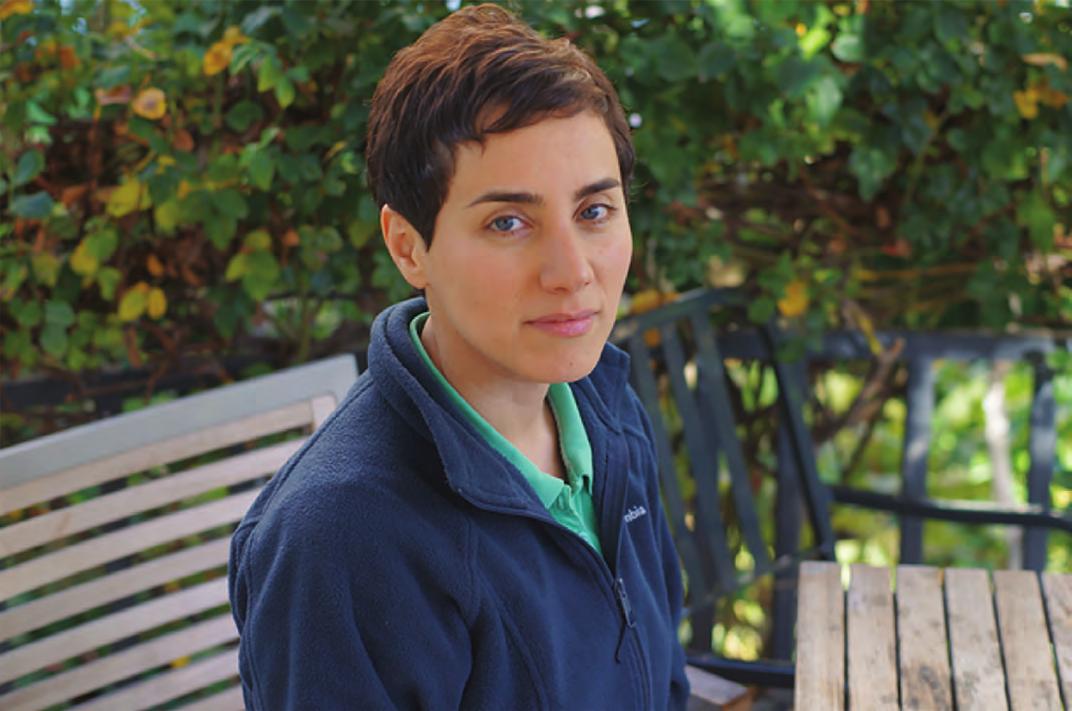
Communicated by Hélène Barcelo and Stephen Kennedy (with contributions from Roya Beheshti; Izzet Coskun, Laura DeMarco, and David Dumas; Elon Lindenstrauss; Peter Sarnak; Alex Eskin; Eugenia Sapir; Hélène Barcelo and David Eisenbud; Ursula Hamenstädt; Scott A. Wolpert; Alex Wright and Anton Zorich).
Maryam Mirzakhani’s Harvard PhD dissertation under Curt McMullen was widely acclaimed and contained already the seeds of what would become her first three major papers. All three of these results — a new proof of Witten’s conjecture, a computation of the volume of the moduli space of curves, and an asymptotic count of the number of simple closed geodesics on a hyperbolic surface — were deep, beautiful, and unexpected. Subsequent papers revealed the geometry and dynamics of the moduli space of hyperbolic surfaces, culminating in the rigidity result achieved jointly with Alex Eskin. Her work exhibits great depth of insight, wide-ranging technical mastery, and creativity and imagination of a very high order. It earned her a Fields Medal in 2014.
Mirzakhani was born on May 12, 1977, in Tehran and grew up in postrevolutionary Iran during the Iran–Iraq War. One of four children, her father was an engineer, her mother a homemaker. All three of her siblings became engineers. It was in middle school that she discovered her passion and talent for mathematics. In high school she participated in the International Mathematical Olympiad, winning gold medals in 1994 and 1995. She earned a bachelor’s degree in mathematics from Sharif University in Tehran and headed to Cambridge, Massachusetts, for graduate study at Harvard.
When Mirzakhani was awarded the Fields Medal in 2014 she had already been diagnosed with the cancer that would eventually claim her life. Always a private and humble person, she did not welcome the attention and acclaim that accompanied the prize. Together with her husband, Jan Vondrák, she wanted to raise their daughter, live her life, and pursue mathematics. Notices asked friends, collaborators, and students of Mirzakhani to write brief reminiscences of her life. We also sought expository work on her mathematical accomplishments from Ursula Hamenstädt, Scott Wolpert, and, writing jointly, Alex Wright and Anton Zorich. The portrait that emerges from these pieces is of a warm, generous, and modest friend, teacher, and colleague — a mathematician of great talent and imagination coupled with grit and persistence to a very unusual degree. Maryam Mirzakhani died, aged forty, on July 14, 2017.
Editor’s note: The text above is from the introduction of “Maryam Mirzakhani: 1977–2017” published in the Notices in November 2018. For the full article, click on the link to the PDF at the upper right of this page.